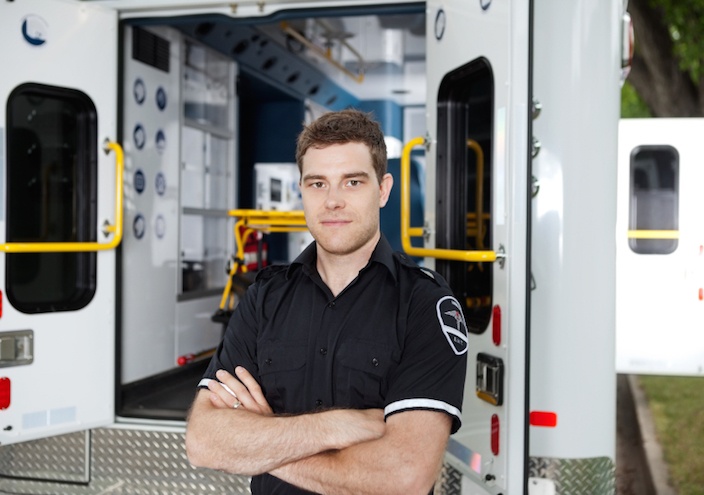
Airway management is one of the most vital aspects of patient care and can range from basic adjuncts to complex interventions. Whether the patient is an overdose, in cardiac arrest, or the victim of multisystem trauma, the first step in treatment and stabilization is securing a patent airway. And fortunately, there are an array of choices for paramedics in the prehospital setting.
As a paramedic, the choice you make will depend on several factors. Local protocols, personal training and education, and equipment availability will dictate the options available. But the most important factor in your choice of airway management is the patient’s condition. So let’s start with the basics and work our way up as we discuss airway management options in the out-of-hospital setting.
1. Basic Airway Management
Basic airway skills are critical. With recent studies concerning high failure rates in endotracheal intubations in the field, combined with an emphasis on a less dogmatic approach to airway management that utilizes optional procedures and adjuncts (other than endotracheal intubation), paramedics must stay focused on their goal: to provide a patent airway. And there are times when that patent airway can be achieved utilizing basic management skills.
a. Positioning – simply positioning the non-trauma patient, either in the position of comfort or recovery position, can open the airway in the spontaneous breathing patient. For trauma patients or those who cannot control their own airway, here are your best options:
i. Head tilt-chin lift: when trauma is not suspected
ii. Tongue-jaw lift: for use in the trauma patient
iii. Jaw thrust: also for use in the trauma patient
b. Airway Adjuncts – simple adjuncts can help secure a patent airway and are a great place to start:
i. OPA: for use in the unconscious patient lacking a gag reflex
ii. NPA: better tolerated than an OPA in the semi-conscious patient but contraindicated in suspected basilar skull or facial fractures
c. Suction – always suspect a full stomach in the unresponsive patient and be prepared for vomit!
i.  can remove large amounts of debris and are enhanced if the patient can be positioned on their side
can remove large amounts of debris and are enhanced if the patient can be positioned on their side
ii. Flexible catheters: for use in suctioning the upper and lower airways, especially when the patient has an artificial airway in place
d. Oxygen Administration – the most commonly administered drug in the prehospital setting
i. Positive Pressure Ventilation: when spontaneous respiration is inadequate, oxygen delivery can be via:
1. Barrier device/resuscitation mask
2. Bag-mask ventilation
2. Advanced Airway Management
a. Intubation
i. Orotracheal: considered the standard for the unprotected airway, but contraindicated in epiglottitis, when you can’t visualize the glottis opening, or in the presence of copious secretions (suction!)
ii. Nasotracheal: best if restricted to situations where RSI is not an option for the spontaneous breathing patient with a deteriorating airway and avoid in cases of nasal, facial or basilar skull fractures
iii. Digital: one of the first techniques developed for placement of ET tubes, where fingers are used in place of a laryngoscope blade, but only in the profoundly unconscious patient and use in conjunction with a bite block!
iv. Retrograde: use of a guidewire to facilitate intubation but you must have the equipment and proper training for success
v. Face-to-Face (Tomahawk): effective method when patient positioning is limited (auto extrication, for example); achieved by holding the blade in a hatchet position with the right hand while advancing the tube with the left
b. LMA – an alternative to orotracheal intubation, but seal maintenance is critical and be alert for aspiration
c. Combitube – an option in failed intubation, especially after RSI, but DO NOT use in patients under 16 years of age
d. Surgical Airways – have the proper training and keep your skills fresh!
i. Needle Cricothyrotomy: a temporary airway and the only surgical option for patients under 12 years of age
ii. Surgical Cricothyrotomy: for patients who cannot be intubated or ventilated but not to be used in patients under 8 years of age; several techniques used, from fully open to modified, and premanufactured kits are available
e. Rapid Sequence Intubation – the coadministration of anesthetic and neuromuscular agents to produce unconsciousness and paralysis in patients requiring intubation. But you must have the training, authority, and proper agents, as well as continuous waveform capnography on hand, for this technique to be used safely
As you can see, the choices in airway management in the prehospital setting are numerous, but they all depend on knowledge, skill, authority, and equipment, and most importantly, what is best for your patient.














